XMM-Newton News Archive 2013 - XMM-Newton
XMM-Newton News Archive - Year 2013
Back to News Archive.
 12-Dec-2013:
12-Dec-2013:
Rare magnetar discovered in the vicinity of a supernova remnant
A team of astronomers led by the PhD student Ms. Ping Zhou from the University of Nanjing in China discovered a new transient magnetar. This magnetar, the ninth of its class, was identified during a COSPAR Capacity Building Workshop for young researchers in developing countries.
Further details on the COSPAR portal.
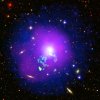 18-Nov-2013:
18-Nov-2013:
Hot gas sloshing in a galactic cauldron
Galaxies are social beasts that are mostly found in groups or clusters - large assemblies of galaxies that are permeated by even larger amounts of diffuse gas. With temperatures of 10 million degrees or more, the gas in galaxy groups and clusters is hot enough to shine brightly in X-rays and be detected by ESA's XMM-Newton X-ray observatory.
Further details on the ESA Space in Images pages.
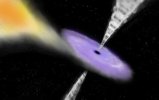 13-Nov-2013:
13-Nov-2013:
Black hole boasts heavyweight jets
Astronomers studying a black hole in our Galaxy with ESA's XMM-Newton observatory have made a surprising discovery about the cocktail of particles that are ejected from its surroundings.
Further details on the ESA Space Science pages.
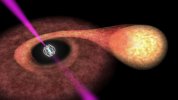 25-Sep-2013:
25-Sep-2013:Volatile pulsar reveals millisecond missing link
For the first time, astronomers have caught a pulsar in a crucial transitional phase that explains the origin of the mysterious millisecond pulsars. The discovery was made possible by the coordinated efforts of ESA's two missions that scan the high-energy sky: INTEGRAL and XMM-Newton.
Further details on the INTEGRAL Science & Technology pages
Also on the Space Science portal
 27-Aug-2013:
27-Aug-2013:
XMM-Newton 13th Announcement of Opportunity (AO-13)
The XMM-Newton Thirteenth Announcement of Opportunity is now open and observing proposals may be submitted.
The deadline is 11 October 2013, 12:00 UT
Further details here on our XMM-Newton SOC Website.
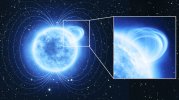 14-Aug-2013:
14-Aug-2013:
Weakling magnetar reveals hidden strength
Astronomers using ESA's XMM-Newton have measured the magnetic field in a small surface feature of a magnetar for the first time. With a new technique, they have now revealed a strong, localised surface magnetic field in the magnetar that had the lowest measured dipolar field. The discovery yields conclusive proof that magnetars conceal some of the strongest magnetic fields in the Universe.
Further details on the ESA Science & Technology pages.
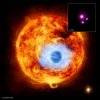 29-Jul-2013:
29-Jul-2013:
Eclipsing Planet seen in X-rays for First Time
For the first time since exoplanets, or planets around stars other than the sun, were discovered almost 20 years ago, X-ray observations have detected an exoplanet passing in front of its parent star.
Further details on NASA's Chandra X-Ray Observatory pages.
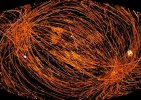 29-Jul-2013:
29-Jul-2013:
Dance of the X-rays
Like car tail lights streaking through a busy city at night, this unique image records over a thousand movements made by ESA's XMM-Newton space telescope as it shifts its gaze from one X-ray object to another.
Further details on the ESA Space Science pages.

 23-Jul-2013:
23-Jul-2013:
Latest XMM-Newton catalogue offers new X-ray vision
The release of a new catalogue from the XMM-Newton space telescope provides an unprecedented cosmic X-ray library for the exploration of the extreme Universe. The third XMM-Newton Serendipitous Source Catalogue (3XMM-DR4) contains more than half a million sources, all of which are provided to a better quality than ever before. Improved data processing means that source identification is more reliable, and fainter objects are detected.
Further details on the ESA Science & Technology pages.
 8-Jul-2013:
8-Jul-2013:
XMM-Newton keeps attracting new talent
The SAS (Science Analysis System ) workshop, held at ESAC from the 10th to the 14th of June, attracted students and young researchers mostly from Europe, interested in learning how to process XMM-Newton data.
Further details on the XMM-Newton SOC pages.
20-Jun-2013:
ESA science missions continue in overtime
ESA has extended the productive lives of 10 of its operating space science missions. This decision secures funding for ESA's world-class science missions until at least the end of 2014, and provides a framework for planning until end of 2016.
Further details on the ESA Science & Technology pages.
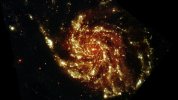 10-Jun-2013:
10-Jun-2013:
Pinwheeling across the sky
The face-on Pinwheel spiral galaxy is seen at ultraviolet wavelengths in this image taken by ESA's XMM-Newton space telescope.
Further details on the ESA Space Science pages.
 28-May-2013:
28-May-2013:
Learning in school with XMM-Newton
In 1572, the great Danish astronomer Tycho Brahe, saw a star explode in the heavens. It changed his view of the universe forever. Now, the remains of that explosion seen by ESA's XMM-Newton space telescope has done the same for a 16-year-old school student from Slovakia.
Further details on the ESA Space for Educators pages.
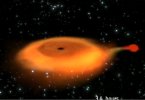 19-Mar-2013:
19-Mar-2013:
Black Hole-Star pair orbiting at dizzying speed
ESA's XMM-Newton space telescope has helped to identify a star and a black hole that orbit each other at the dizzying rate of once every 2.4 hours, smashing the previous record by nearly an hour.
Further details on the ESA Space Science pages.
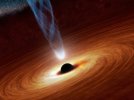 27-Feb-2013:
27-Feb-2013:
Speedy black hole holds galaxy's history
A rapidly rotating supermassive black hole has been found in the heart of a spiral galaxy by ESA's XMM-Newton and NASA's NuSTAR space observatories, opening a new window into how galaxies grow.
Further details on the ESA Space Science pages.
 11-Feb-2013:
11-Feb-2013:
X-raying the Eskimo
Peering inside the fur-lined hood of the Eskimo Nebula with ESA's XMM-Newton space observatory reveals a hot face of X-ray-emitting gas blazing at 2 million degrees.
Further details on the ESA Space Science pages.
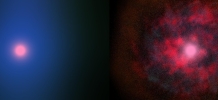 05-Feb-2013:
05-Feb-2013:
Massive stellar winds are made of tiny pieces
ESA's XMM-Newton space observatory has completed the most detailed study ever of the fierce wind from a giant star, showing for the first time that it is not a uniform breeze but is fragmented into hundreds of thousands of pieces.
Further details on the ESA Space Science pages.
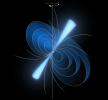 24-Jan-2013:
24-Jan-2013:
Baffling pulsar leaves astronomers in the dark
New observations of a highly variable pulsar using ESA's XMM-Newton are perplexing astronomers. Monitoring this pulsar simultaneously in X-rays and radio waves, astronomers have revealed that this source, whose radio emission is known to 'switch on and off' periodically, exhibits the same behaviour, but in reverse, when observed at X-ray wavelengths. It is the first time that a switching X-ray emission has been detected from a pulsar, and the properties of this emission are unexpectedly puzzling.
Further details on the ESA Science & Technology pages.
